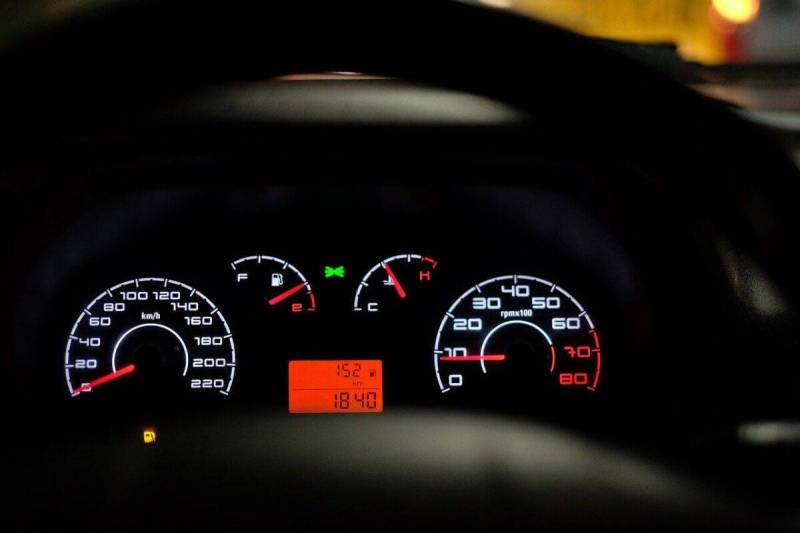
What Are Common Instrument Cluster Issues
The instrument cluster is an important component of your vehicle. You might have experienced erratic movement is your gauges or even no movement at all. Here is a guide to issues with your Jeep’s instrument cluster and more.

Among the most popular electrical issues with Jeep models are instrument cluster issues. We are going to discuss the symptoms of a bad instrument, the causes and what you can do about it. Read on for further insight on Jeep cluster issues.
What does the instrument cluster actually do?
You may know the cluster as the voltage regulator, or even just cluster. This is an important system of the vehicle that engages with the driver, providing useful data while driving. Some of the information that that cluster will provide you while in transit involves the speed, fuel level, coolant temperature and much more.
This data displayed on gauges will come in handy to help you maintain safe driving conditions for yourself and other drivers. Because modern Jeep clusters are electronic, they depend on voltage to operate.
[amalinkspro_table id=”4044″ new-window=”on” nofollow=”on” addtocart=”on” /]
Symptoms of a bad or failing instrument
The instrument cluster as we have already discussed provides you with important information about how properly your vehicle is running. The cluster usually exhibits a number of symptoms that will alert you of a faulty instrument or impending failure. Some of the most common symptoms of a failing cluster on your Jeep include the following.
Incorrect readings
When you notice erratic readings from your cluster, then chances are high that you are experiencing a failing instrument. There may be an issue causing the culture to display wrong readings. Alternatively, the data displayed may change rapidly or cut on and off, making it hard to get a reading from your cluster.
Inoperable cluster
Another popular symptom of a failing instrument is when you find it difficult or impossible to operate your instrument. In some cases, the cluster may fail completely and shut down. In other cases, the instrument cluster will start up but no information will come up while in transit.
Flickering or dim gauges
Loss of LCD display or constant erratic shifts in your gauges could mean you have issue with your instrument cluster. Alternatively, you might experience needles stuck on a reading or even fluttering.
This is a sign that your instrument cluster may have an issue somewhere. The loss of LCD backlight could be as a result of burn out to your indicator lights or backlights. This makes the gauges quite difficult to read, which could be problematic.
TIP: While it may seem like an insignificant part of your car system, the instrument cluster plays a big role in safe driving. It is important that you keep it in good health for reliable data while you drive.
Fault codes or OBD II codes associated with cluster issues
OBD is short for on board diagnostics and it forms part of the self diagnosis OBD II code system that help monitor various parts of your vehicle. These include the control module, body, engine and the works. The codes usually start with a letter indicative of the part of the vehicle at fault.
- B Body that includes the parts found in the passage compartment zone
- P Power train that includes the engine, transmission and other associated accessories.
- C Chassis which includes the mechanical systems and functions
- U Network and vehicle integration which includes the functions managed and shared by the onboard computer systems.
These letters are followed by a number to complete the code. The number is either 1 or 0. Zero if the code is a generic or standardized one and 1 if it manufacturer specific. The third character identifies a particular vehicle system.
These run from 0 to 7 making them eight systems in total. The fourth and fifth characters complete the DTC. The two digits run between 0 -99 and help identify the exact issue you are dealing with.
PRO TIP:
In order to read these codes, you need a proper reading device or scan tool. Because the connectors on all OBD compatible models are the same, you do not need to worry about a special adapter.
The software required to read these codes however may vary. You will therefore need to a tool equipped with software compatible to year, make and model of your car.
The U0155 issue
Looking at this code, you can tell it’s an onboard computer systems problem. It is a communication system DTC which applies to many models including Jeeps. It means that there is a communication issue between your Instrument panel control and other control modules. Often this code is associated with symptoms like a malfunction indicator lamp, all you indicator lights come on or none of them come on.
In order to diagnose a U0155 issue, your mechanics will have to scan your vehicle for its trouble odes. Usually, this service can cost you anything between 70 to 150 dollars. Apart from experiencing issues with a failing instrument cluster, the only other way you can suspect a U0155 error is when the check engine light comes on.
In case you decide to check the codes yourself, here is a guide to inserting and reading an OBD scanner in order to read fault codes on your Jeep. Because the connectors on all OBD compatible models are the same, you do not need to worry about a special adapter.
You will need to a tool equipped with software compatible to year, make and model of your car. Here is a quick guide to properly inserting your scanning device;
- First locate the 16-pin Diagnostic Link Connector usually underneath the dash close to the steering column. Not all the connectors are located here; some models have the connector on the center console or elsewhere.
- Next, you will plug in your scanning device and turn on the ignition without staring the engine. This way, you are able to connect the code reader to the vehicles computer.
- Lastly, push the read codes button or select read codes option depending on the device model you are using.
Causes of your cluster issues
Electrical problems
These are often the most common causes of Jeep cluster instrument issues, especially those with electronic instrumentation. Usually, the cluster runs on a minimum 10 v and starts to behave strangely when there is an issue with this supply.
Among the signs that an electrical issue is causing you cluster problems include inaccurate or no readings on your gauges or weird characters on the display. The best solutions for electrically caused cluster issues are based on a solid diagnosis. You must identify any broken wires or blown fuses and efficiently reconnect or replace them.
Dirt accumulation
Dirt accumulation or loose instrument cluster plugs could mean issues with your cluster. This is especially popular among older jeep models. Dirt or loose plugs will trigger sporadic function of your gauges. You may also experience the gauge light flicker while you drive. This issue is especially popular among old Jeep Cherokees and TJs.
Additionally dirty connection within your steering column or in the switches will cause the fog lights to randomly come back on. The hazard lights might also come on and remain on even when turned off.
In order to fix this issue, you may have to clean out these parts with pressurized or compressed air. Jeeps Wranglers from 2001-2006 popularly duffer from this cluster issue.
Famous Jeep Grand Cherokee cluster issues
In 2014, Jeep recalled the Jeep grand Cherokee because of the issue with the ABS module that triggered instrument cluster problems. The cluster on these Jeeps constantly displayed the random warning light and even blackouts with some vehicles. The only fix was to update the cluster and ABS software to remedy the display problems.
Another popular Jeep grand Cherokee model with a problematic instrument cluster is the 1997 Grand Cherokee where customers have reported Instrument cluster problems with the gages going haywire
What next – Fixing a bad instrument cluster
On average getting you instrument cluster replaced could cost you between 800 to 900 dollars, inclusive of the part and the installment cost. While the labor cost to reinstall the instrument cluster is about a hundred dollars, the large part of the expense will be from purchasing the parts.
Removing the instrument cluster from your wrangler
If you plan of fixing broken dirty or blown parts on your instrument cluster then you must learn to remove the cluster properly from your car to access the malfunctioning parts. In order to remove the instrument cluster from your Wrangler,
- Begin by removing the screws from the driver’s side. These usually hold the trim valance in place.
- Next, you will have to coax off the trim piece off, which isn’t as difficult as you’d think. Simply pop it off to reveal the screws holding the instrument cluster in place which you will proceed to unscrew.
- Afterwards, disconnect the wiring harnesses connected to the back of your instrument cluster and VIOLA! It’s out. You will however need to properly store your screws properly to avoid losing any of them.
Final Word
The instrument cluster on your Jeep is prone to various failure, come due to electrical failures others due to gradual wear or even manufacturers errors. Whatever the cause, it is still important to maintain your instrument and gauges in top conditions for accurate readings and therefore safe driving.
[amalinkspro_table id=”4044″ new-window=”on” nofollow=”on” addtocart=”on” /]
